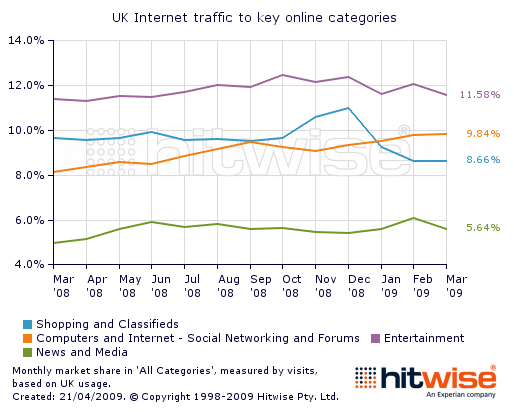 In school we have learned how to write a summary in 5 sentences max. Isn’t this exactly what we need to create (newsletter) text ads that are meant to generate leads? Let’s see…
In school we have learned how to write a summary in 5 sentences max. Isn’t this exactly what we need to create (newsletter) text ads that are meant to generate leads? Let’s see…
The last nine years working with customers on silicon.de, we have seen hundreds of bookings for text ads in our newsletters. In most of the cases these were meant to generate leads as we say. Now sure, leads is a powerful and impactful term ensuring the future of business, sales opportunities and save the job of responsible decision makers in marketing or sales departments.
Lead generation can be seen as collecting addresses (contact generation), profiling customer needs for products and services (interest generation), or using the direct offer for real sales or bargains (lead generation). For this post we make no distinction on the three different categories and just want to focus on the 5 sentences formula.
Headline
The number one…
The one-sentence headline is the door-opener, the eye-catcher, the first impression on your customer and your access to lead opportunities – and revenue in the end. If you fail there, the rest of your text ad will be deleted immediately in front of your customers eyes. An effect we call the ‘Skip this ad’ view…
As customers -hopefully- spend some time reading your headline (remember that this is a gift customers hand over to your business…), you should give them some kind of benefit in return from the start. So my advice is, find successful openings to create a basis for your lead generation idea from the start.
The offer. This must be written in clear words and addressing the customers needs, desires … or purse.
Examples: Get your free paper… Use 25% offer… Profit from money back…
The rhetorical question. All things that appear to be clear to customers but raise attention and/or curiosity. In Twitter days, we realized that people with rhetorical text messages generate big interest. My most-read post ended ‘… future of the business, or business of the future’. Using oxymoron is just fabulous…
Example: Don’t you want to win the lottery? Don’t you think firewalls are necessary? Don’t you think washing hands saves your health?
The advice. The world is full of questions and everyone is eager to get more insight in tools, tactics and trends which leads to even more questions. The more valuable ‘coaching effect’ we offer, the better our reputation becomes – and with that our convergence. ‘How to’ is the answer to those questions… and the reason for the headline of this post.
The ‘buzz verb’. Indicate with the first words what the (potential) customer is intended to do and what your business expectation is. This is a direct approach which is most often used for real lead generation.
Examples: Read now…, Buy now…, Follow up…, Enter data…
The ROI view. Especially in times of recession everybody is looking for better profitability. If there are ‘easy-to-receive’ options, people are open to use those and leave their data with your business.
Examples: Become more productive…, Save money by…, Increase sales with…
Body text
Sentence two to four (max.)…
The body text outlines the benefit and explains the customer how and why using the offer is desirable and makes sense. In my theory this should be done with the following 3 sentences, or optional as main ideas for your body text. Addressing the customer that is already leering to the point-of-sale (POS) …
Problem. Customers who see their responsibility have more urge to get in touch with your offer and business benefit than those who are just tangent to the issue as a tiny part of a (business) system. Target the people you are interested in by describing problems, duties or responsibilities your target group wants to get rid off or find an ease in – and which are on an open plate in public (business) talks.
Examples: How your live can change…, How your sales can benefit…, How your wife is happier…
Opportunity. Use stats or testimonials that your customers can identify with. These should illustrate your problem statement. In case you haven’t invented a complete new product, offer a comparison which puts the benefit in pictures like a metaphor.
Example: People that have used this have lived 3-times longer than…, People that bought this product, saved 25% off their time…
Scenario. The conclusion of the previous explanation, leading to just one intention. Wanting to ‘own’ the product, service, etc…
Example: Seeing these facts, you have the proof why…, Reading this you have not many options… (not ‘no’ option – no teacher mode!)
PS: The body text framework is also a successful structure that works for Google text ads.
Call-To-Action
Last sentence, number five…
Don’t leave the user in the scenario mode. Tell the (potential) customer what he/she needs to do now. Take him/her by the hand and push their eyes with ONE sentence to ONE action point (=URL). No confusion, just conversion!
Example: Click here…, Download now here…, Save now with one click….
Spot On!
Generally speaking: One break per ‘block’ (headline – body text – call-to-action). The shorter the message, the more open customers are to have a glance at it.
PLUS: A text ad is not a branding tool! Mentioning products more than once is useless. Trademark as well as copyright signs have no right to exist in text ads. Please use banners if you are after branding and awareness.
Brevity is the soul of wit. And if you need help, just let me know…
 This is just some thoughts creeping up my neck…
This is just some thoughts creeping up my neck…






